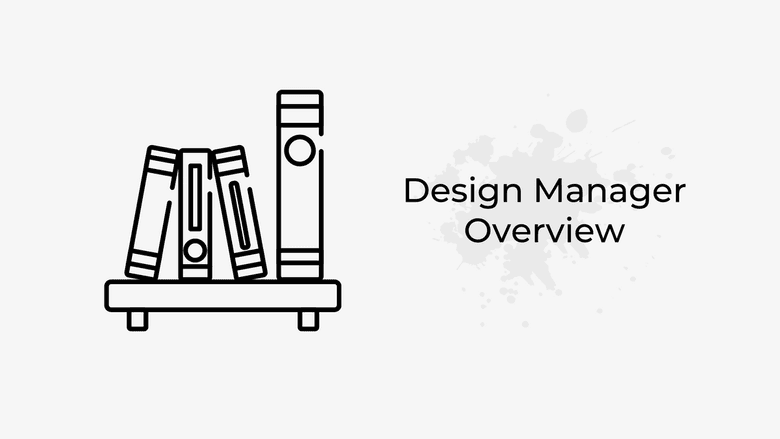Becoming a Design Manager with Airbnb’s Alexander Mimran
A comprehensive guide to design management, along with advice from Minbox founder and Airbnb design manager Alexander Mimran.
While the term “graphic design” was coined in 1922, the rise of the tech design role is much more recent. In the past few years, many Silicon Valley companies have ramped up hiring on their design teams. Between 2012 and 2017, the designer-developer ratio shot up from 1:25 to 1:9 at Atlassian and 1:72 to 1:8 at IBM.
Alongside the increasing prevalence of tech designers, the design manager position has seen a jump in popularity. Whereas the phrase traditionally evoked thoughts of the cloud-based interior design software program, it’s now a legitimate and relatively common career path.

What is a design manager?
Also known as a design director, a design manager oversees the graphics and design teams at a tech company. They’ll typically collaborate with other teams, like marketing, product design, and product development, to make sure that the design is properly integrated and successful in delivering its message.
The design manager role varies based on many factors, including the size of the company, the industry it works in, and the purpose of design in the business. However, they’ll typically have the same core responsibilities: develop design templates, implement new strategies and methodologies, oversee the design team and deliver feedback, collaborate with other teams, present design ideas to management, and track and analyze feedback from stakeholders.
Why you should (or shouldn’t) become a design manager
Personal Considerations

As a design manager, you’ll spend a lot of time overseeing the design process, but you usually won’t get a chance to create anything. Instead, like a project manager, your role is geared toward communicating with other people and working toward big-picture goals. That doesn’t mean you necessarily have to be an extrovert, but if putting your head down for a few hours to work on graphics is the highlight of your day, you might have to give that up when you take on a management role.
On the other hand, being a manager can be rewarding in a lot of ways. Since you don’t have to worry much about minor details, you can direct your efforts toward perfecting the design project as a whole and making sure that your team’s work is adding value to the company. Additionally, you’ll be able to use your negotiation skills to implement more significant changes to the new product and convince other managers why the team should pursue your strategy over others. When tasked with the responsibility of making more high-impact decisions, you’re likely to feel like you’re expanding your influence at the company.
Financial Considerations

Another common incentive of taking on the role of design manager is the salary increase. The average annual base pay for a design manager is $101,840 according to Glassdoor, or $95,000 according to LinkedIn, compared to $61,507 for a designer. However, this can vary depending on factors like geography, as a design manager will make around $103,901 in Los Angeles, or $91,753 in Atlanta.
However, many advise against pursuing a design manager job title solely because of the higher pay. Fabricio Teixeira, a design director at the New York tech and design firm Work & Co, wrote a blog post about the motivations behind the transition into design management. In the article, he talked about how many companies have recognized the importance of having experienced senior designers and paying them more for their qualifications. However, he said that in order to be paid more as a specialist, you need to show that you’re providing additional value. This may include getting better at your craft, becoming more efficient to create things faster, or making more strategic design decisions.
How to become a design manager
There’s not usually a clear-cut path to becoming a manager in any industry, and design is no exception. However, many design managers are promoted from senior designers who show expertise and leadership promise.
A bachelor’s degree isn’t a must-have for many designers, but experience is. According to Job Hero, most successful design manager candidates have at least seven years of design experience and three years of design leader experience. Therefore, if you want to get on track to become a design manager, it’s important to explore different areas of the industry, from graphics to user experience, and to take on leadership roles where you can.
You’ll also want to work on developing skills that will come in handy on the job. While it’s important to be a talented and experienced designer, you’ll also want to be confident in your people-management skills. Not only will you have to manage conflict within your own team, but you’ll also have to be observant enough to produce feedback for your team members and persuasive enough to enact changes at company meetings. On top of that, it’s also important to have strong project management skills, as you’ll be juggling many responsibilities and stakeholders at once.

In order to get a first-hand perspective on the position, we talked to Airbnb design manager Alexander Mimran. After graduating from the University of Pennsylvania where he studied economics and journalism, Mimran founded multiple companies before working full time at Airbnb in San Francisco. He shared his unconventional story and advice for current designers and future managers.
Can you talk about your path to becoming a design manager?
Mine’s a little untraditional, but I’m self-taught. I started using Adobe tools when I was 13, and then got into design, and I just loved it. In high school I was actually freelancing and working for friends and family, mostly doing print design. After that, I had a small agency where I had ten clients or so at any given time, and then I started my startup.
So I went from that into being a design founder, and that was where I was doing the design work and found companies at the same time. I was able to bring my ideas to life using my design skills and work with engineers to build it. I started a couple of companies, and I sold my most recent one to Airbnb, and I’ve been at Airbnb ever since.
Why did you choose not to study design in college?
I received a scholarship from Pratt for their design program and decided not to take it, and I regret that decision. I’m not sure why I decided not to do it. I think I wanted to start making money and getting into the workforce, but that probably would have changed things.

I didn’t do design in undergrad either. I thought about it, but it wasn’t common, it wasn’t something that my friends were doing, and I just did what I thought I should be doing. I actually have a degree in Economics and Psychology. Those things, when combined, were really cool. But the psychology aspect of it has been really interesting in terms of its crossover with design and usability. There’s a whole consumer, social psychology part, but then there was actual cognition and perception. A lot of Gestalt stuff was really interesting to me, which is very applicable to design.
What does your day-to-day look like at Airbnb?
Airbnb is a very fast-moving company. It’s very much like a startup. There’s a lot of things moving at once. As manager or design lead, you’re coordinating a lot. You’re making sure that everyone has visibility into your work and into the team’s work and making sure that you have alignment across functions. When you’re a hyper growth company like we are, a lot of your energy is spent in that coordination, as well as ensuring the quality of the work and getting great work out there.
What was most surprising to you about the transition from designer to management?
It’s very different because you’re not hands-on. I was very used to being hands-on up until my second startup when we were able to hire some designers. I think it’s a different skill set, not being hands-on, allowing people that make the work to have the creative freedom and agency to do what they want, but also making sure that they’re moving toward a great output and work that benefits the company and benefits the end user as well.
What do you think are the most important skills for a design manager?
Airbnb is slightly different because design managers are actually required to be in the work, so you’re not just managing the team-- you’re also responsible for the work. So in that case, I think there’s a design portion, and then there’s a people management portion.
So for the craft and work portion of it-- I think you need to have been a hands-on IC in order to really have the context and understand how to direct the team. And then on the people management side, I think having prior management-related experience is super important.

Most importantly, though, to be a successful design manager you need to figure out how to harness the power of your team. The way I've done that in the past is to help each of my reports set a goal for their career. Once they've done that, all I need to do is be their best advocate and guide them to where they want to go. And then, a great manager can take a more passive role and let the team and the work speak for itself.
What advice would you give to prospective design managers?
I think a lot of people might want to be a design manager because they think that’s the way to progress in their career, but they don’t necessarily have a true passion for people management. You should really have a passion for it, and you should really want to see other people grow and succeed. I think if you do, then that’s great, and that’s something that you can continue to cultivate.
Any kind of management whatsoever, whether it’s mentoring, doing talks or teaching or anything-- those are good things to give you the tools that you need in order to be a manager. My management style is also really different, like really relaxed. My first job, I had a manager who was very oppressive, and so since then, I’ve tried to be less of a manager and more part of the team. Especially at Airbnb, I think that’s the best strategy.
The information provided herein is for general informational purposes only and is not intended to provide tax, legal, or investment advice and should not be construed as an offer to sell, a solicitation of an offer to buy, or a recommendation of any security by Candor, its employees and affiliates, or any third-party. Any expressions of opinion or assumptions are for illustrative purposes only and are subject to change without notice. Past performance is not a guarantee of future results and the opinions presented herein should not be viewed as an indicator of future performance. Investing in securities involves risk. Loss of principal is possible.
Third-party data has been obtained from sources we believe to be reliable; however, its accuracy, completeness, or reliability cannot be guaranteed. Candor does not receive compensation to promote or discuss any particular Company; however, Candor, its employees and affiliates, and/or its clients may hold positions in securities of the Companies discussed.
